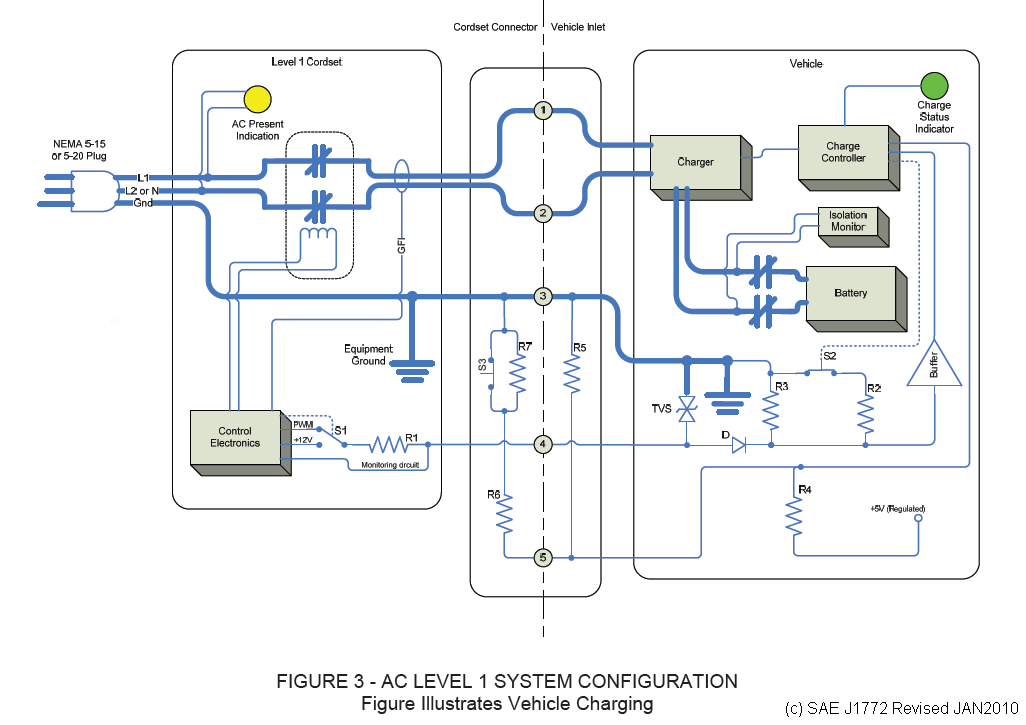chris1howell
Well-known member
ChrisM said:Hello Guys.
I have a question about the "Proximity" part:
In this tutorial I saw how the Pilot circuit was done, and i also found it in the Open EVSE Source Code. But J1772 also includes a proximity circuit.
(http://en.wikipedia.org/wiki/SAE_J1772#Signaling" onclick="window.open(this.href);return false. So there you have different resistances between PP & PE. Now i want to know, is this also included in
the Open EVSE Code? If so, please be so kind and show me this part please.
I hope that you can answer my question,
Kind Regards
Chris M.
Proximity is handled between the J1772 handle and the EV. The EVSE, charging station has no role in proximity.
Here is some referance information J1772 basics:
http://code.google.com/p/open-evse/wiki/J1772Basics
http://open-evse.googlecode.com/files/J1772.pdf





